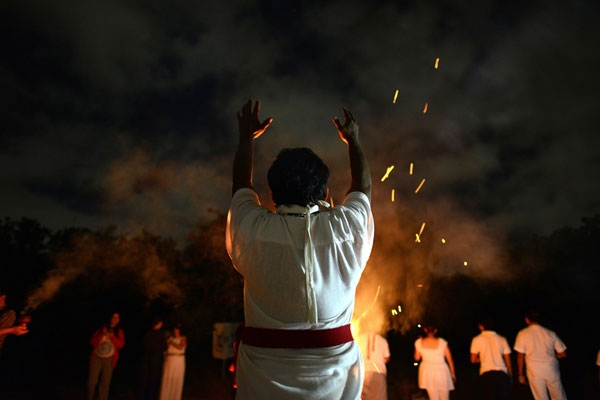The real 'Apocalypse' is December 23, not December 21
While many people have booked rooms in former Mayan holy places to prepare for the 'apocalypse', the researchers think that the Maya do not really set a specific milestone about the time of the world. doom on December 21, 2012 as many people think.
Apocalypse legends inspired many authors and filmmakers who had never actually appeared in a T-shaped stone block, which the Mayans had carved into it around 669 AD in southeastern Mexico.
In fact, that slab records the cycle of life. Accordingly, the last day of the Mayan calendar is December 23, 2012, not December 21, and it means the end of a cycle to open a new cycle.
'Mayans have a time cycle. This cycle does not mean much about the end of the world, " Mexican geologist Jose Romero told AFP.

The Mayans have the idea of the cycle of life so day
finally December 23, 2012 is merely the end of a cycle.
That means there will be no collapsing buildings, horrifying floods, earthquakes and volcanoes like Hollywood described in the blockbuster movie '2012'. It is the imaginary product of Hollywood filmmakers, not Mayans.
The stone is said to be Monument 6, located in El Tortuguero, an archaeological site discovered in 1915.
The plate was broken into 6 pieces, the pieces were displayed in various museums in the US and Mexico, including the Carlos Pellicer Camara Anthropology museum in Tabasco (Mexico) and the Metropolitan in New York.
The first study on stone columns was published by a German expert in 1978. Since then, many geographic experts say that the above mentioned Mayan stone columns refer to December 23, instead of December 21. / 2012.
Archaeologists have discovered that the Mayan calendar of stone dates dates from 3114 BC to December 23, 2012. However, since the Mayans had the idea of the cycle of life, the last day of December 23, 2012 was merely the end of a cycle, not the end of this world.

Mayan rock calendar (Source: AFP)
A Mayan time cycle counts as 13 baak t'uunes, with each baak t'uunes equivalent to 144,000 days.
In fact, the Mayans do not predict what is big and far away, but only predict the events in the near future, involving crops, rain or drought.
'The Mayan calendar has no end points, but infinite. That's the beginning of a new cycle, that's all, " said Mexican historian Erick Velasquez.
According to experts, it is the Christian followers who talk about the end of the world, not the Mayans. And recently, the Mayan representative spoke out about the so-called "end of the world" on December 21, 2012.
- Apocalypse on reality
- The Vatican reassures believers about
- 5 silly predictions about the Middle Ages Day
- Apocalypse: Apocalypse to science (Part 1)
- Real, broken story Doomsday
- Is December 21, 2012 the end of the world?
- Count down to 'apocalypse'
- Lo the apocalypse, the billionaires money to buy shelter
- On the face of the prediction 'Earth is destroyed in the coming week'
- People on Mars are also not sure to avoid apocalypse?
- The Viking predicts 'Apocalypse' will score on February 22, 2014
- Video: The horrifying prospect of Paris' apocalypse
 10 famous Isaac Newton inventions
10 famous Isaac Newton inventions 'Doomsday 2021' and Mayan conspiracy theories
'Doomsday 2021' and Mayan conspiracy theories 7 perspective of the destruction of the Earth
7 perspective of the destruction of the Earth Isaac Newton predicted the world would end in 2060
Isaac Newton predicted the world would end in 2060